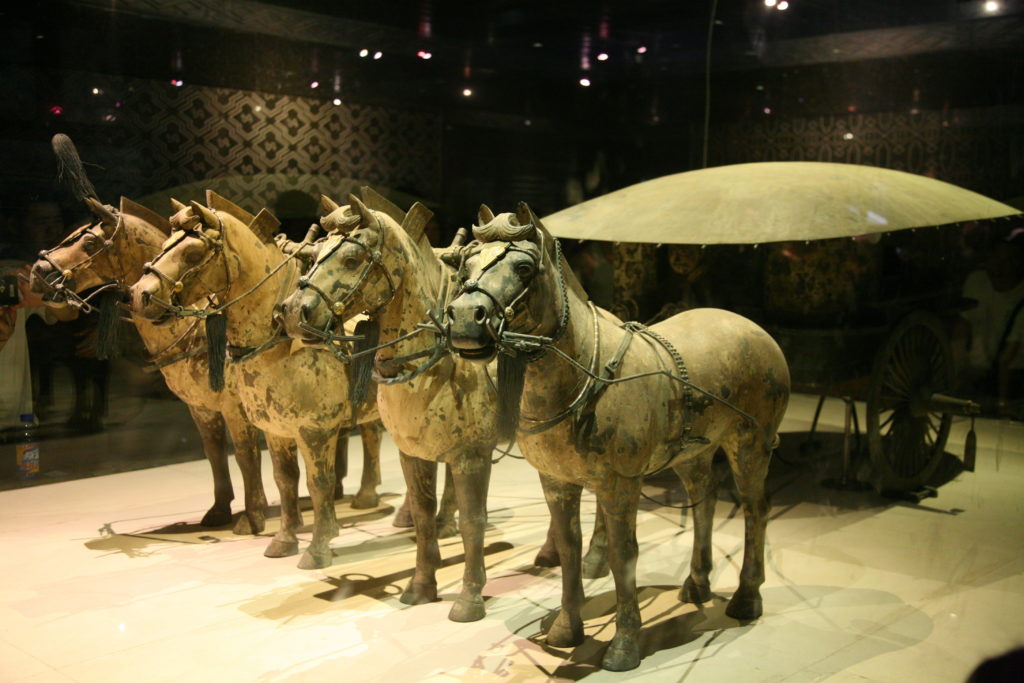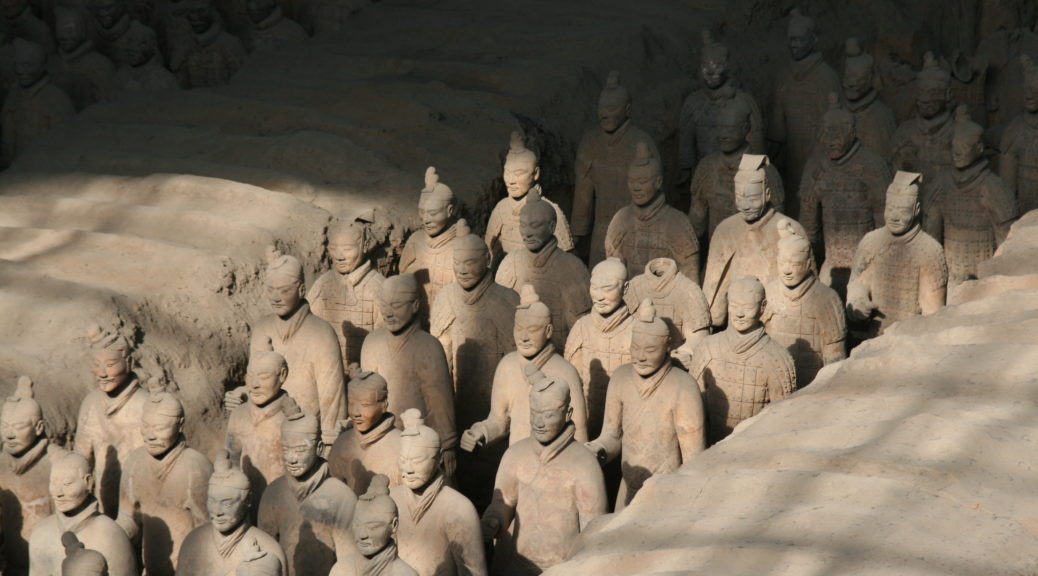
Xi’an
One of the places we visited in Xi’an was the Big Wild Goose Pagoda. It was built in 648 AD to house the Buddhist supras, which are scriptural doctrines of Buddha. The pagoda pictured below is part of a large temple complex where monks still worship. Another picture is one of several statues of Buddha we saw during our visit. We also saw people lighting incense as they prayed.
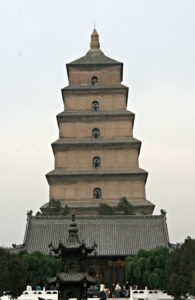
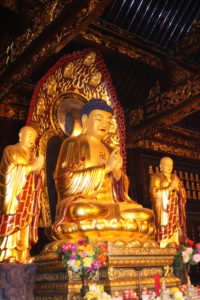

The highlight of our time in Xi’an was seeing the terra cotta warriors. They were discovered by a farmer in 1974 who was digging a well. The terra cotta warriors were made to serve the first emperor of China in the afterlife. The warriors date back to 210 BC. The emperor, Qin Shi Huang, was only 13 years old when he ordered construction of the terra cotta warriors. We spent most of our time in Pit One which held statues of infantrymen, charioteers and their horses. The pit is estimated to contain 8,000 warriors. A large building was built over the pit which provides protection from the elements as well as security.
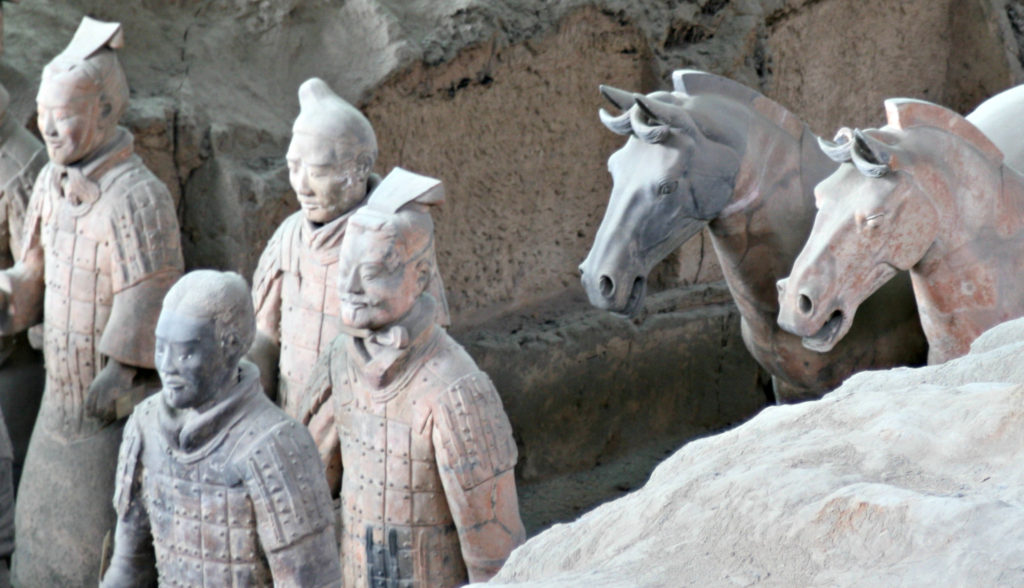

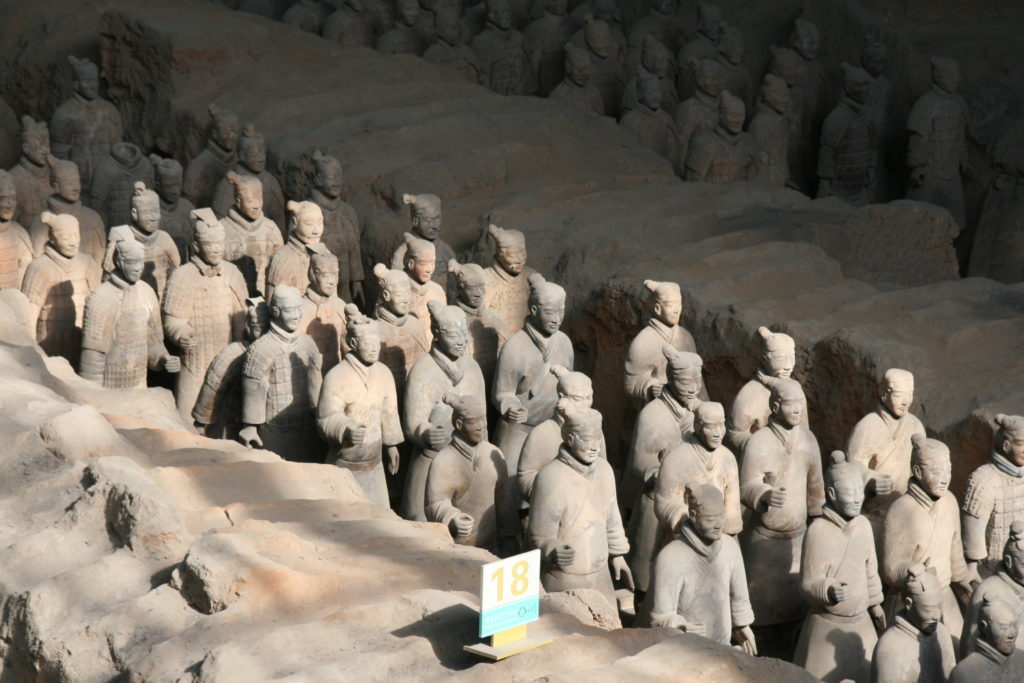
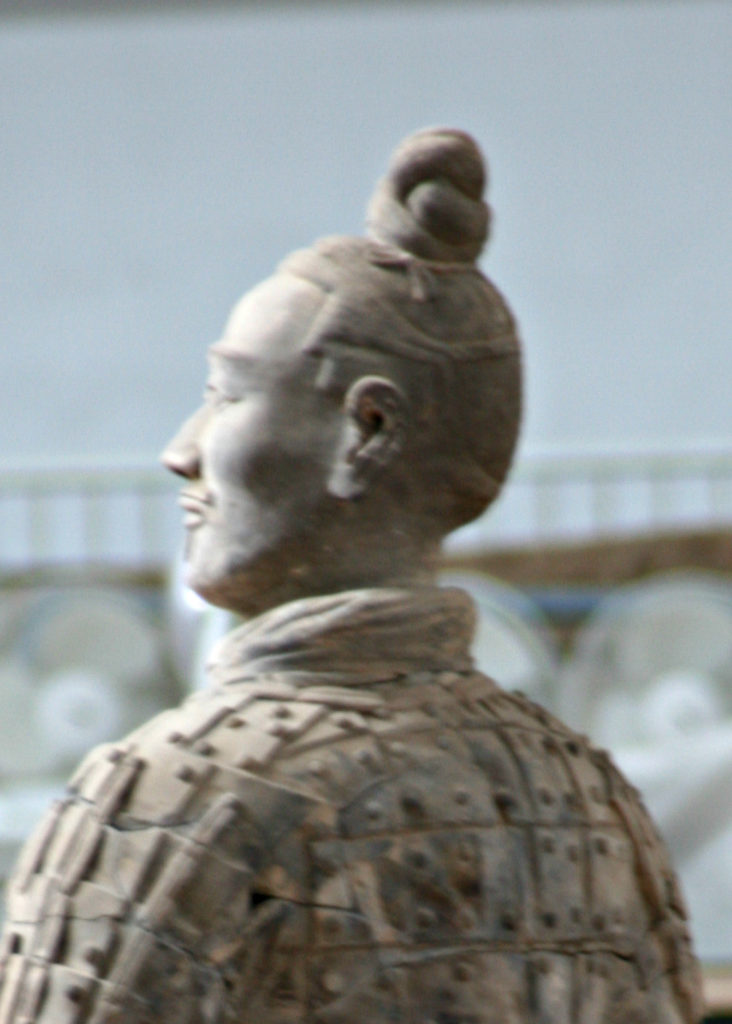
Toward the back of Pit One, terra cotta warriors were being repaired. When restoration is complete, we were told that generally 95% of the soldier is composed of its original material.

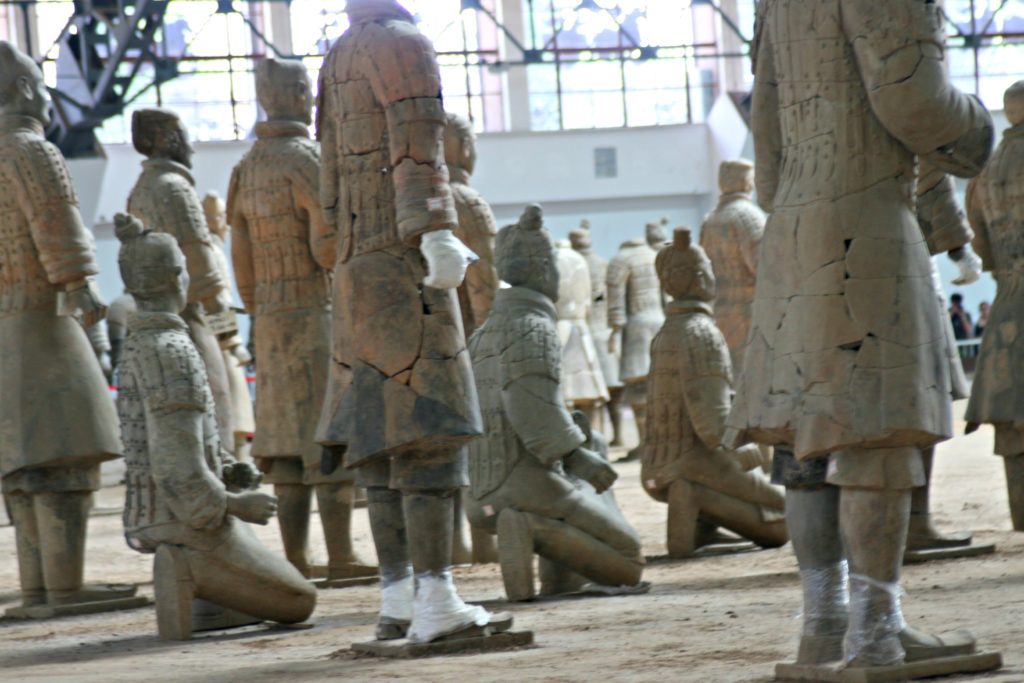
I also wanted to share the picture below which I purchased through Shutterstock. It gives you a sense of the massiveness of Pit One. This is actually what we saw when we walked into Pit One. It is particularly impressive when you consider that the terra cotta warriors were each made by hand from clay. We learned that the different parts of the warriors (their heads, arms, legs and torsos) were made separately in molds and then these parts were put together. Using more clay, additional carving/detail work was completed which made each warrior unique. It is truly an archeological wonder!
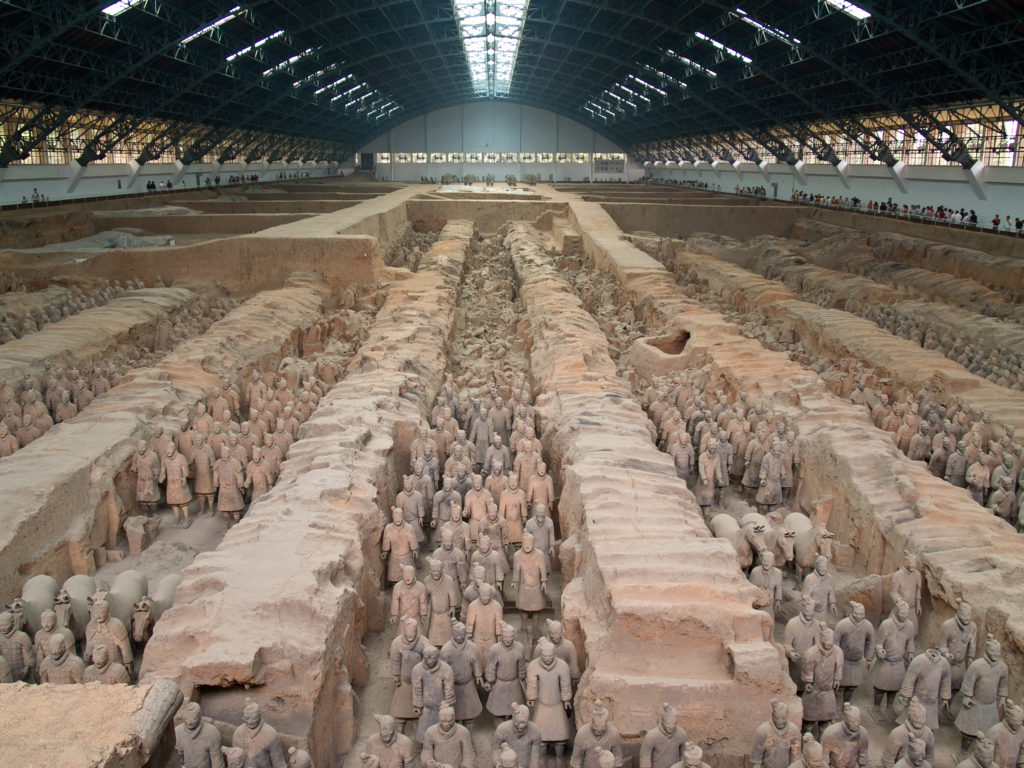
We also visited Pit Two, which contains cavalrymen, archers, chariots, infantrymen and bronze weapons. Archers can be identified because they are not protected by armor. I have included two pictures from Pit Two – unfortunately the light was not nearly as good as in Pit One, so the pictures are not great quality – but it will give you a sense of what we saw. Pit Two also had a variety of warriors in display cases, depicting different types of soldiers. After the pictures of the pit, you will see some of these including an officer, a cavalryman and an archer.
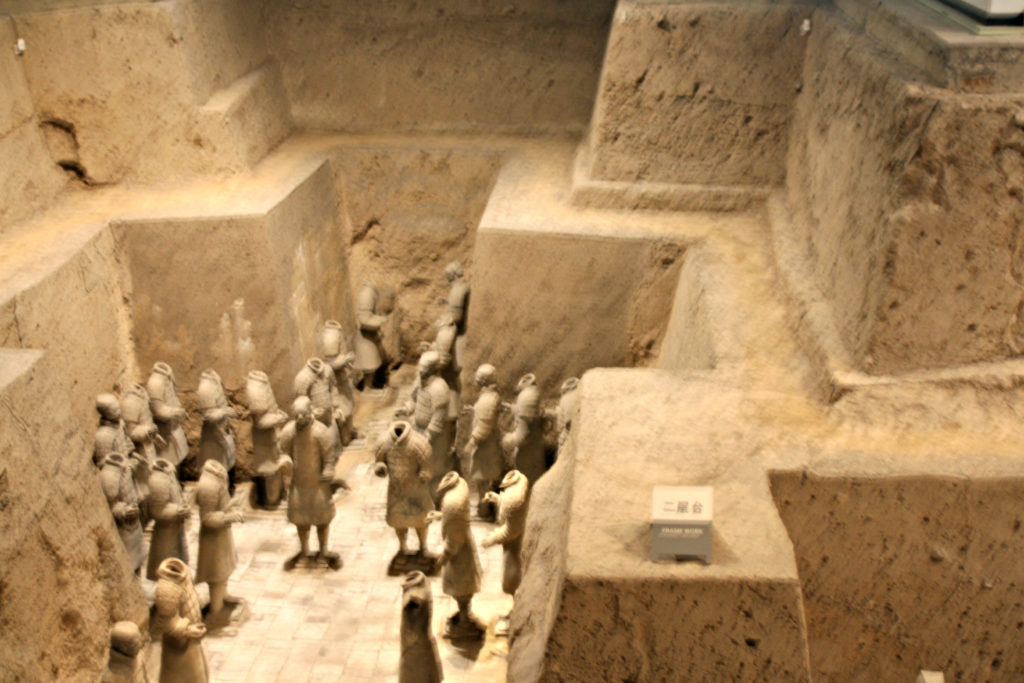
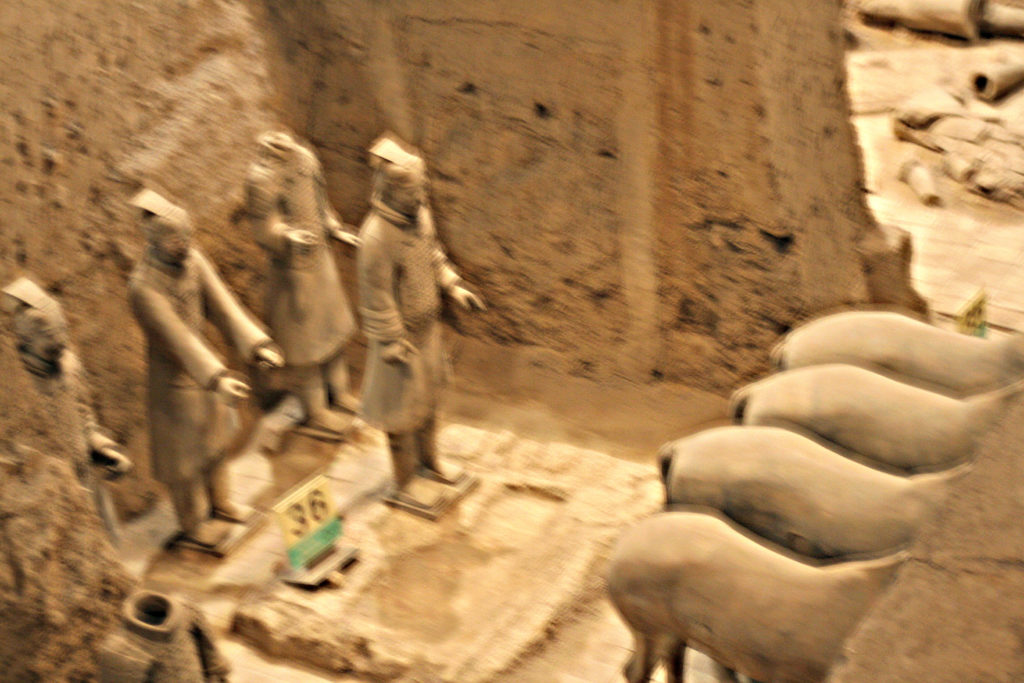

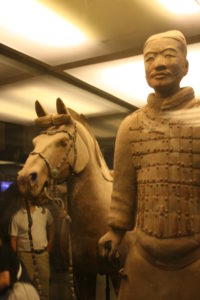
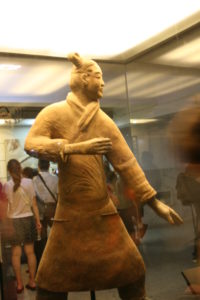
The last picture is one of Chariot Number 2 and is one I purchased. We saw the chariot in the Exhibition Hall, but it was enclosed in glass so I had difficulty getting a good quality picture. The chariot is bronze but also has some gold and silver ornamentation. It was discovered in 1980 and was near Emperor Qin Shi Huang’s mausoleum. The chariot was probably intended for the Emperor to inspect his troops in the afterlife. The mausoleum has not been excavated. There are stories about “rivers of mercury” near the mausoleum and soil testing has revealed the presence of mercury which would make excavation dangerous to those involved in the work. As I am sure you can imagine, seeing the terra cotta warriors was an incredible opportunity and one we were so thankful we could experience!
